Runway gowns have been the hallmark of haute couture for ages, mesmerizing viewers with their stunning designs and demonstrating the heights of fashion imagination. From Paris’s high-end salons to the world stages of contemporary Fashion Weeks, these breathtaking pieces have evolved in an incredible way, responding to shifting tastes, cultural changes, and technological innovations. In this exhaustive investigation, we will explore the intriguing realm of runway gowns, from tracing their history to analyzing present trends and looking to the future of luxury fashion.
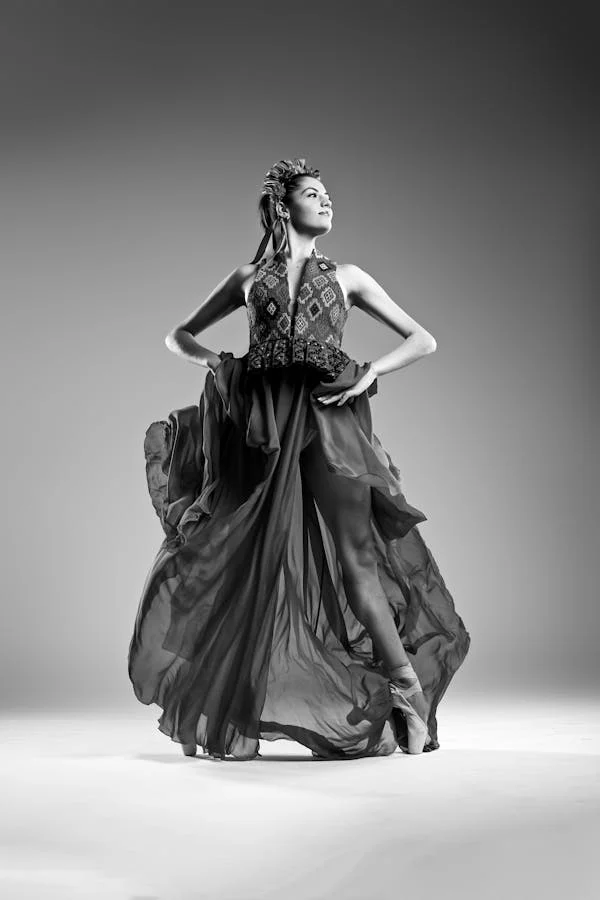

Table of Contents
The Origins of Runway Fashion
The modern notion of the fashion catwalk owes its origins to Paris in the 19th century. At the time, they were small gatherings, staged within the ateliers of established designers for invited groups of clients who were financially well off. The displays lasted for hours and were elaborate in nature, as models modeled every piece in the collection. In this manner, designers could establish interest and sell directly to customers.
As the world of fashion evolved, so too did the show on the catwalk. US department stores began hosting similar fashion shows, incorporating Parisian style or their own versions. Such shows had two functions: displaying the stores’ fashion expertise and filling the niche between elite haute couture and mass-produced dress.
The Golden Age of Haute Couture
The mid-20th century was the heyday of haute couture, where iconic designers such as Christian Dior, Coco Chanel, and Yves Saint Laurent created stunning gowns that uncaptioned eras. These works of art were carefully made, usually taking hundreds of hours of handwork to finish. Runway presentations during this era were lavish events, where each collection was a narrative built using fabric, silhouette, and ornamentation.
Women’s boutiques looked forward to these collections, as they would determine the style of the season. The trickle-down effect of haute couture reached the ready-to-wear lines, where a wider public could taste high fashion.
The Rise of Ready-to-Wear and Democratization of Fashion
As the 20th century went on, ready-to-wear collections became more prominent, and designer fashion became more widely available to consumers. This trend was also seen in runway shows, which started to include a combination of haute couture and ready-to-wear items. The introduction of mass media and fashion magazines continued to democratize access to high fashion, and consumers could learn about the newest runway trends.
The Digital Revolution and Social Media Impact
The late 20th and early 21st centuries saw a seismic change in the fashion world with the advent of digital technology and social media. Runway shows, previously elite events for fashion insiders, became international spectacles broadcast live to millions of people around the globe. This leveling of access has had a dramatic effect on the fashion world, affecting everything from design to marketing campaigns.
Social media sites such as Instagram are now virtual catwalks, and designers and brands can exhibit their new offerings directly to customers. This instant interaction between audience and creators has created the popularity of the “see-now, buy-now” phenomenon, whereby runway items become available for purchase the moment after the show.
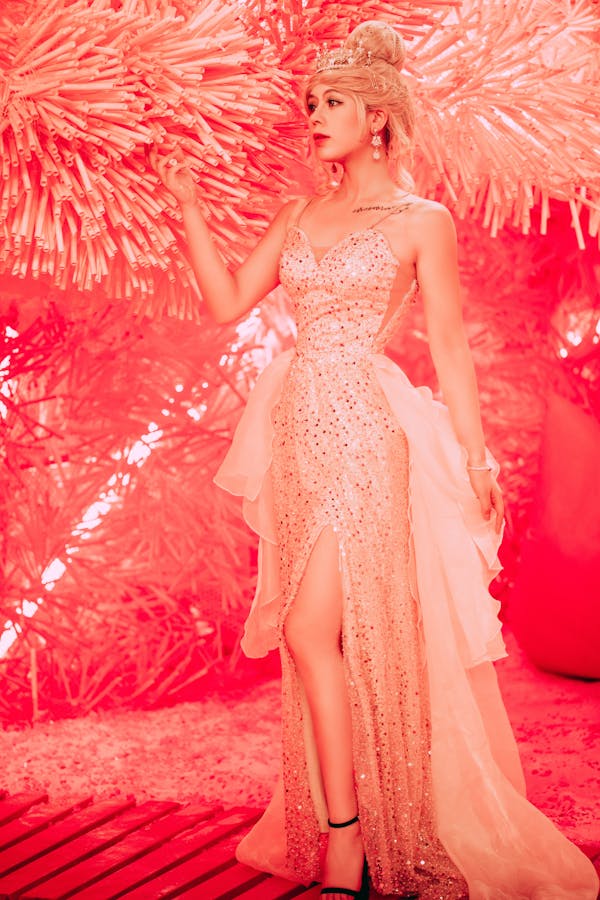

Current Trends in Runway Gowns
Spring 2025 collections have brought a new wave of optimism and personalization in fashion. Designers are embracing a spirit of joy and playfulness, with maximalism being a huge return. Below are some of the most important trends defining the landscape of runway gowns:
Soft Power Silhouettes: Soft draping, ruffles, and layers of chiffon are taking over the runways. Designers such as Jonathan Anderson are crafting ethereal dresses with bouncy hoop skirts crafted from crinoline.
Maximalist Glamour: Beaded jackets with ruffled floral chiffon skirts, lace tights, and bold statement jewelry are producing drama-filled outfits. Valentino and Saint Laurent are combining brocade pieces with lace tops and satin skirts for a rich, layered look.
Subverted Demure: Timeless silhouettes are being reinterpreted with a twist. Prada and Balenciaga are presenting Peter Pan collar coats with colored tights and bow-tie blouse dresses with surprising open backs.
Utility Meets Glamour: Fashion designers are discovering creative ways to merge utility with luxury glamour, revamping classic evening wear with contemporary utility jackets.
Unconventional Hemlines: Unkempt hemlines and unconventional trousers are all the rage, with some designers featuring one-legged pants for a really avant-garde style.
Ornate Embellishments: The “more is more” philosophy is in full effect, with designers including brocade jackets, jeweled tops, and heavily embellished dresses in their collections.
Floral Fantasies: Runway gowns are in bloom with a variety of floral prints, ranging from dainty patterns to big, mixed bouquets on dresses of every kind.
Layered Looks: The fashion trend of dressing up over pants gives a new interpretation to styling and makes room for flexibility and self-expression.
Boudoir Lace: Lace is now the showstopper for both day separates and sophisticated party dresses, much in unconventional colorways and usages.
High-Low Hemlines: Evening gowns that have front-facing hemlines and trailing trains in the back are making dramatic red-carpet-making moments.
The Future of Runway Gowns
Looking ahead, some trends are poised to influence the development of runway gowns:
The Beauty of Runway Gowns: A Peek into High Fashion Trends*
The Art of Creating Runway Gowns
Runway gowns are not mere garments; they are a style of artistic expression that blends creativity, craftsmanship, and opulence. Fashion designers spend months working on sketches, choosing fabrics, and designing minute details to turn an idea into reality. The gowns typically have distinctive silhouettes, elaborate embellishments, and exquisite fabrics that render them wearable works of art.
Fabrics That Define Luxury
The use of materials is very important in runway gown attractiveness. Designers select premium materials to promote movement and beauty.
- Silk: Smooth in texture and sumptuous to touch, silk is a hit in high-end fashion.
- Tulle: Produces volume and creates the dreamy, ethereal quality for gowns.
- Velvet: Creates richness and depth, great for evening dressing.
- Chiffon: Lightweight and flowing, suited for delicate, feminine designs.
- Lace: A delicate and intricate fabric frequently utilized in romantic and vintage-look gowns.
- Satin: A lustrous fabric which provides structure and sophistication.
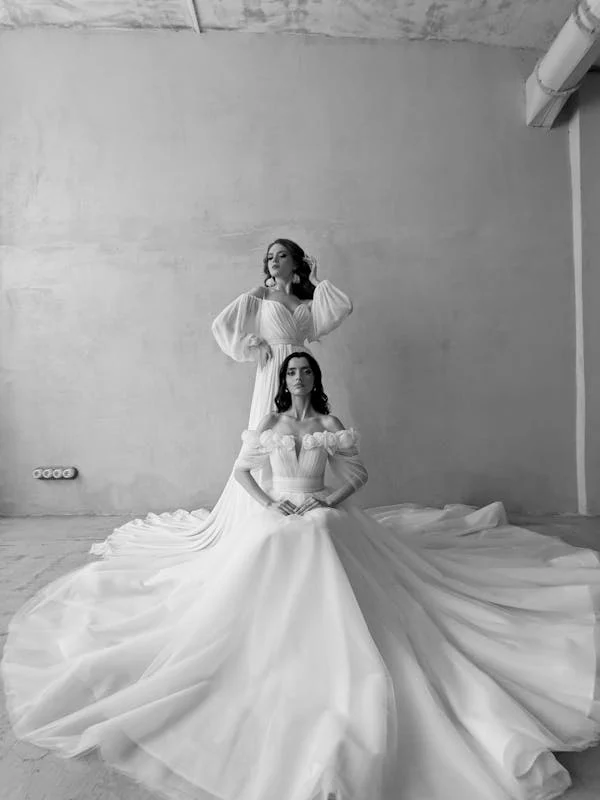

Runway Gowns Silhouettes in Vogue
Designers play with different silhouettes to produce dramatic effects on the runway. A few of the most popular styles are:
- Ball Gowns: With a fitted top and a full skirt, ball gowns recall the fairy-tale princess attire.
- Mermaid Gowns: Fitting closely, from the body up to the knee, these gowns flare out, giving an ideal hourglass silhouette.
- A-Line Gowns: Fitted from top to bottom and smoothly increasing towards the hem, these gowns are suitable for every body type.
- Sheath Dresses: Close-fitting and body-conforming, these gowns give a contemporary and elegant look.
- High-Low Gowns: Short, in front, with length in back, these gowns bring the touch of surprise and movement.
- Cape Gowns: With a flowing cape in place of sleeves, they make for a dramatic, regal look.
Runway Gowns Color Trends
Color is a crucial element in determining the mood and effect of a runway gown. Fashion houses tend to play with bold and ageless colors to make for dramatic images.
- Classic Black: Forever in style, elegant, and timeless.
- Fiery Red: Statement color that commands confidence and power.
- Pastel Tones: Blush pink, lavender, and baby blue contribute a dreamy quality.
- Metallic Colors: Silver, gold, and bronze metallic colors catch light and produce a futuristic look.
- Jewel Colors: Emerald, royal blue, and burgundy add luxury and depth.
- White & Ivory: Representative of purity, commonly used in bridal fashion.
Statement-Making Embellishments
Runway dresses are usually bedecked with elaborate embellishments to provide glamour and individuality.
- Sequins & Beads: Shining details that reflect light and give a dazzling impression.
- Embroidery: Hand-stitched designs that provide texture and depth.
- Feathers: A showy touch that provides movement and sophistication.
- Crystals & Rhinestones: Ideal for providing luxury and sheen.
- Ruffles & Layers: Providing volume and a theatrical look.
- Cut-Outs: Contemporary designs that reveal a glimpse of skin without compromising on elegance.
Runway Gowns from Iconic Fashion Houses**
Some of the world’s most iconic fashion houses have led the way with their exquisite runway gowns.
- Chanel: Renowned for classic elegance and meticulous detailing.
- Dior: Combines femininity with innovative designs.
- Versace: Dramatic, body-hugging gowns that make a statement.
- Elie Saab: Renowned for stunning embroidery and flowing silhouettes.
- Valentino: Expert in show-stopping capes and ruffled gowns.
- Zuhair Murad: Romantic, fairy tale-inspired gown specialists.
- Alexander McQueen: Alternative, artistic, and daring creations.
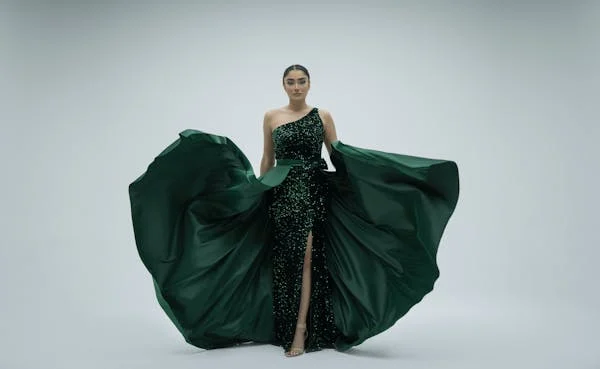

Runway Gowns for Every Occasion
Runway gowns suit several high-profile functions, each necessitating a special design.
- Red Carpet Affairs: Glitzy, headline-making gowns donned by celebrities.
- Bridal Style: High fashion wedding gowns featuring intricate beading and lace.
- Met Gala: Fashion-forward and creativity-stirring theme-based gowns.
- Award Shows: Statement gowns with luxurious fabrics and bold details.
- Fashion Week Shows: Experimental designs that set future trends.
- Gala Dinners & Charity Balls: Elegant and sophisticated pieces that command attention.
Modern Innovations in Runway Gowns
With advancements in fashion technology, designers are incorporating innovative elements into their gowns.
- Sustainable Fabrics: Eco-friendly materials like organic silk and recycled fibers.
- 3D-Printed Gowns: Unique designs created using cutting-edge technology.
- Light-Up Dresses: Using LED lights for a space-age appearance.
- Convertible Gowns: Gowns that change with the addition or removal of layers.
- Digital Fabric Prints: Vibrant, personalized prints designed using digital methods.
The Role of Celebrities in Runway Gown Trends
Celebrities influence runway gowns immensely. They set fashion trends with their red carpet appearances.
- Beyoncé: Famous for show-stopping, body-hugging gowns with striking embellishments.
- Rihanna: Pushes boundaries with experimental and attention-grabbing gowns.
- Zendaya: Walks in traditional yet avant-garde styles that set trends.
- Lady Gaga: Known for unusual, artistic floor-length gown selections.
- Jennifer Lopez: Adopts glamorous, body-fitting shapes.
- Angelina Jolie: Goes for timeless sophistication with flowing materials and classic lines.
How to Style a Runway Gown Off the Catwalk
Although runway gowns are meant to be picture-perfect, they can be styled to suit everyday affairs.
- Minimal Accessories: Allow the gown to shine with minimal jewelry.
- Elegant Heels: Strappy sandals or stilettos add glamour to a gown.
- Soft Glam Makeup: Dewy skin, neutral lip color, and well-defined eyes suit most gowns.
- Classic Hairdos: Updos, curls, or low ponytails go well with dramatic gowns.
- Layering with Capes or Shawls: Adds modesty and added glamour.
Taking Care of a Runway Gown
Given their luxurious nature, runway gowns require proper care and maintenance.
- Dry Cleaning Only: Most high-end fabrics need professional cleaning.
- Proper Storage: Use garment bags to protect from dust and damage.
- Avoid Direct Sunlight: Prolonged exposure can fade delicate fabrics.
- Handle with Care: Be mindful of embellishments that can snag or tear.
- Air Out After Wear: Prevents odors and keeps the fabric fresh.
Runway gowns continue to be a staple of top-tier fashion, changing with every new trend. Whether styled on red carpets by celebrities or strutted down fashion week runways, these gowns represent innovation, opulence, and artistic genius.
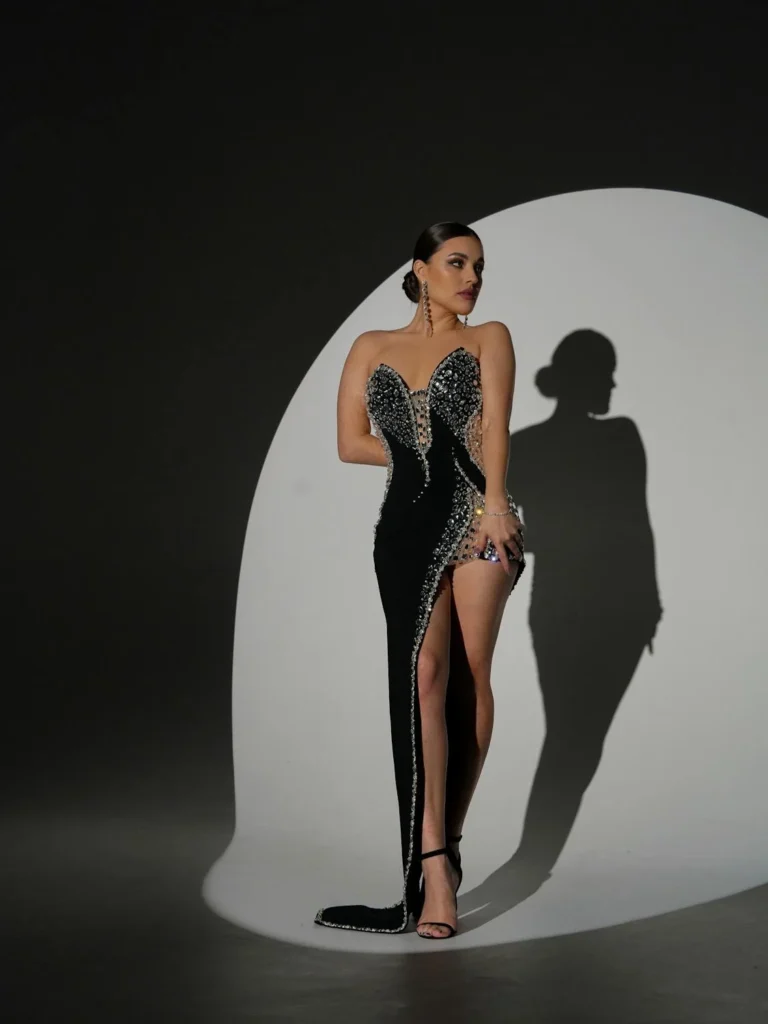

Sustainability and Ethical Fashion
With growing concern about the environment, designers are turning to sustainable materials and processes. Runway gowns in the future could be made with recycled materials, new eco-friendly fabrics, and zero-waste designs.
Technology Integration
Technological improvements in wearable and smart fabrics will see runway dresses that shift in color, evolve with the environmental conditions, or even show digital information. Technology and fashion confluence holds out great promise for future collections.
Virtual and Augmented Reality
When the technologies for virtual and augmented realities become advanced enough, we will have runway models that incorporate elements of both. Virtual garments will be displayed as well as their physical counterparts to provide more potential for creative work.
Personalization and Customization
Advanced manufacturing methods and 3D printing can provide customized runway gowns. People could order individual pieces of the runway made especially to fit their bodies and taste to their liking.
Inclusivity and Diversity
The clothing industry is more and more adopting diversity in all its meanings. Upcoming runway fashion shows are set to have more body types, ages, and race groups represented, a reflection of how fashion has become globalized and its customers.
The Role of Women’s Clothing Stores in Runway Fashion
Women’s clothing stores play a crucial role in bringing runway fashion to the masses. While haute couture gowns may be out of reach for most consumers, many stores offer inspired pieces that capture the essence of runway trends at more accessible price points.
Department stores such as T.J.Maxx have adopted the “Runway” collection concept, offering affordable designer evening gowns and dresses. Consumers can now enjoy high-fashion style without the accompanying haute couture price.
Department stores and boutiques host trunk shows and special events showcasing runway-inspired collections, providing customers with a sense of the Fashion Week experience. These events generate buzz around new arrivals and facilitate the transfer of runway trends to wearable, everyday fashion.
Historical Roots and Evolution
The tradition of displaying gowns started in the late 19th century when designers showcased their work on live models, or “mannequins,” to high-end clients. Fashion parades became more formalized by the early 20th century, with designers such as Paul Poiret adding theatricality to engage viewers. These early parades set the stage for contemporary runway fashion, where gowns grew more elaborate and experimental.
In the mid-20th century, Christian Dior’s “New Look” revolutionized women’s fashion with cinched waists and voluminous skirts, marking a return to opulence after wartime austerity. This era also saw the rise of haute couture houses like Chanel and Balenciaga, whose gowns redefined elegance and luxury. The 1980s and 1990s brought bold silhouettes and vibrant colors, reflecting the exuberance of the times. Designers like Versace and Valentino dominated runways with gowns that exuded confidence and sensuality.
Iconic Moments Along the Catwalk
Certain gowns rise above their moment in history to become symbols of their era. Audrey Hepburn’s Givenchy dress in Sabrina (1954) became the benchmark for timelessness and elegance, while Princess Diana’s “Travolta dress” became a global sensation for its poise. Sarah Burton’s design for Kate Middleton’s wedding in 2011 was an embodiment of contemporary royal beauty. Red carpet affairs have themselves become a continuation of the runway, with stars wearing couture dresses that confuse the boundaries between art and apparel. Lupita Nyong’o’s otherworldly Prada dress at the 2014 Oscars and Jennifer Lopez’s now-famous Versace jungle-print dress at the 2000 Grammys are perfect evidence of how runway fashions transcend popular culture.
Innovations in Design
Today’s runway gowns are not only about looks but also about breaking the rules. Fashion designers now try out unusual materials, like sound-reactive textiles or 3D-printed accessories, to achieve otherworldly styles. Sustainability has also joined the dialogue, with sustainable fabrics and recycled materials gracing high-fashion runways. Runway gowns remain awe-inspiring and changing, and they are the best proof that fashion can both blend tradition with innovation and get to the pulse of every generation.
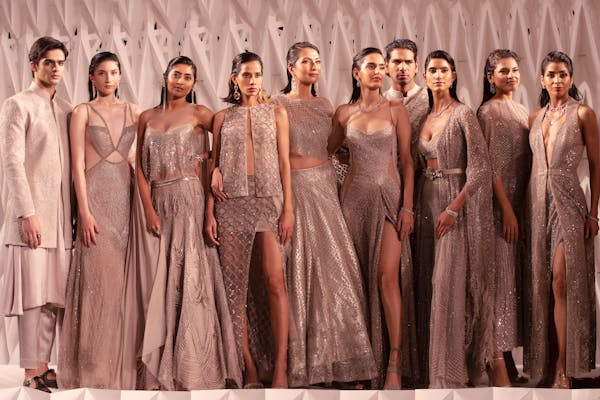

Conclusion
In spite of the constantly shifting dynamics of fashion, runway dresses persist in enchanting and inspiring us. They stand as the acme of designing innovation, mastery, and artwork. Whether sweeping red carpets, gracing the covers of fashion magazines, or igniting movements that trickle into mainstream fashion, these stunning designs remain an invincible force driving our world of dress.
As we progress, the runway gown will necessarily change, but its spirit – the capacity to transform, to tell a story, and to make the wearer feel extraordinary – will be at the core of high fashion forever.
In summary, runway gowns are not only gorgeous clothing; they embody our culture, our hopes, and our shared imagination. As we move forward, we can anticipate these exquisite works of art to keep breaking limits, pushing boundaries, and inspiring generations of fashion enthusiasts globally.
Runway gowns have always been the essence of glamour, a canvas of artistic expression and a mirror of cultural change. Throughout the decades, these garments have progressed from mere showcases of craftsmanship to graphic declarations of innovation and self-expression.
